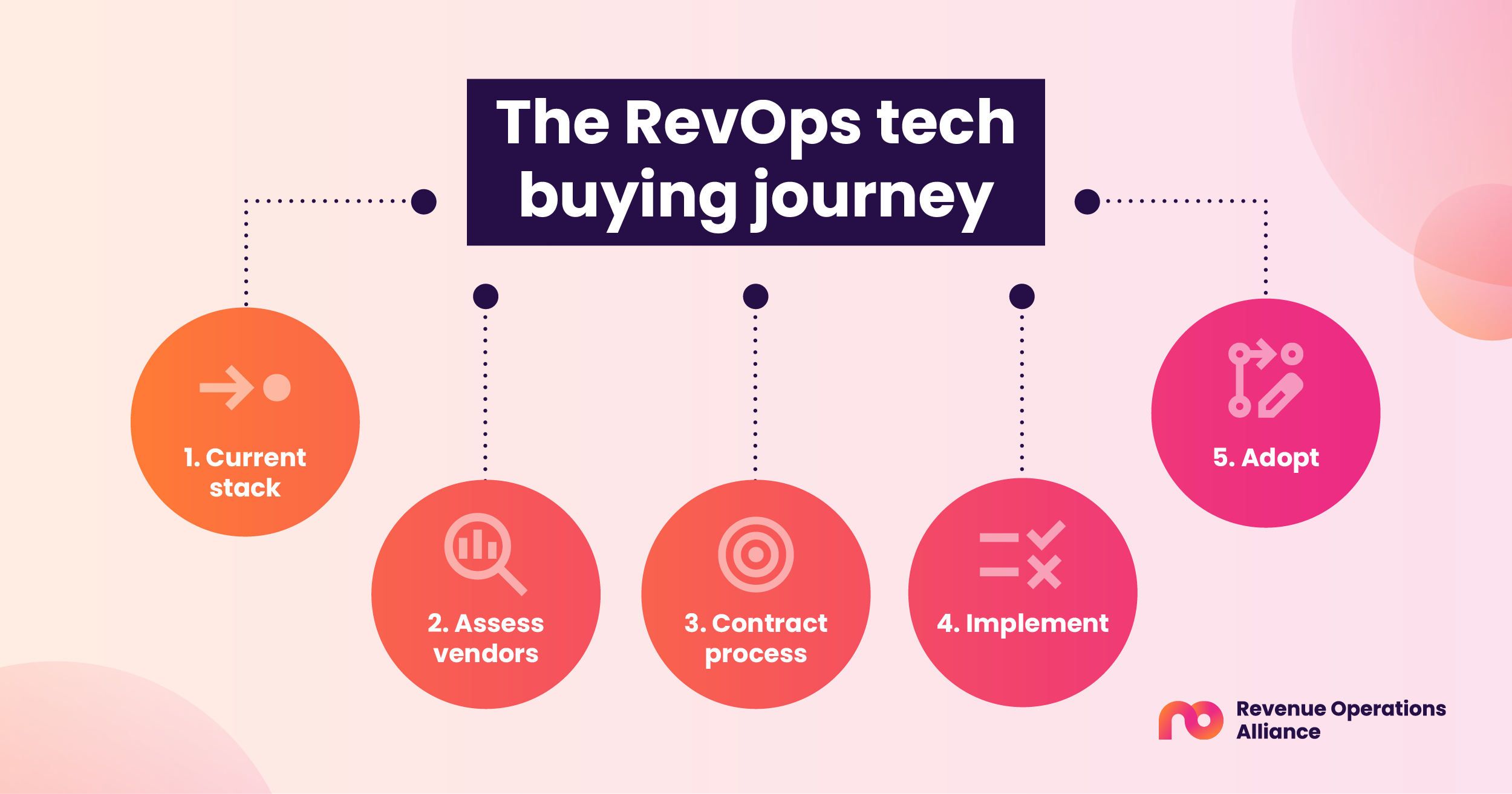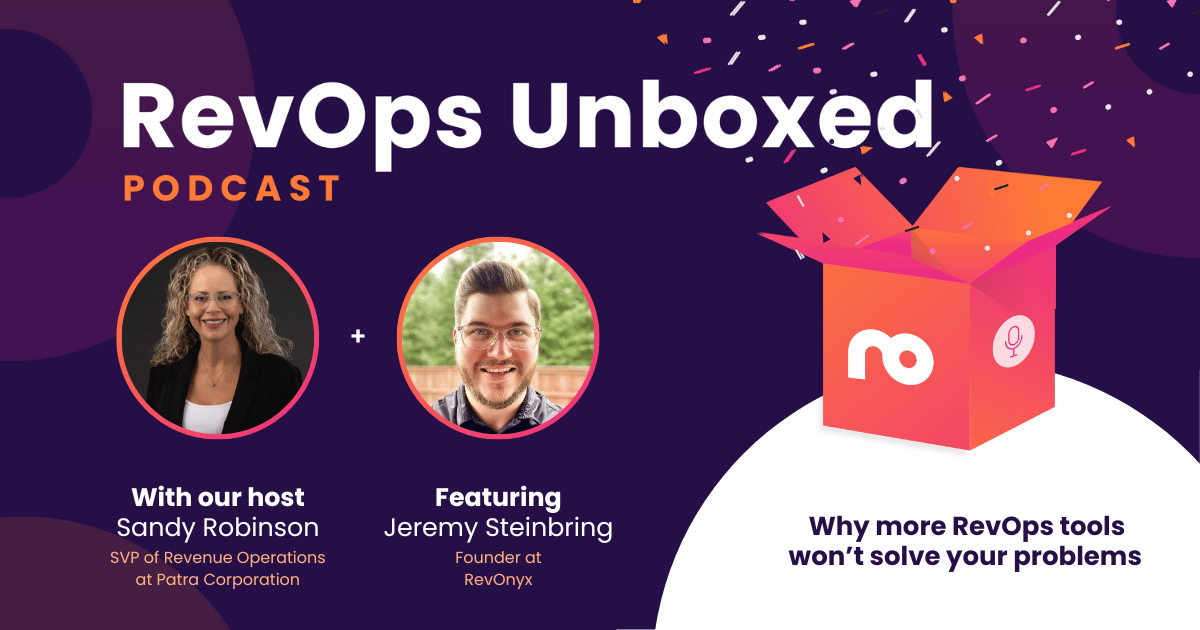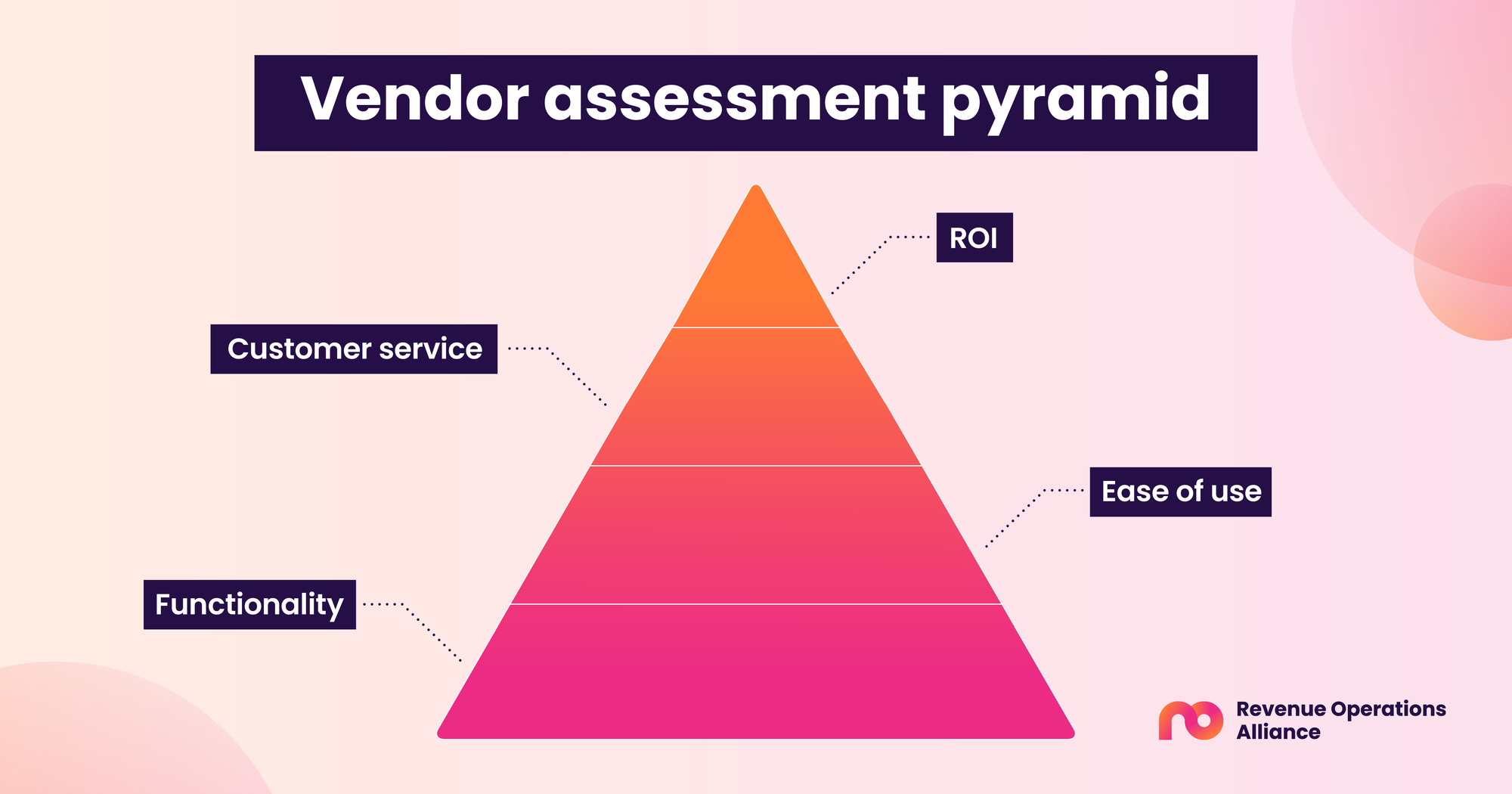This article comes from our community panel discussion, RevOps tech stack procurement: Best practices.
I’m Greg Larsen, VP of Revenue Operations at Eltropy, and Revenue Operations Alliance ambassador. In this article, I’ll be summarizing the panel discussion I recently moderated with John Hunt, Head of Revenue Enablement at Zappi, and Joe Aurilia, Jr., SVP of Operations at Cyware.
As someone who's been in the RevOps game for years, I can tell you that building out your tech stack is no walk in the park. You can't just sign up for any old software and call it a day. There's a whole maze of decisions, criteria, and stakeholders to navigate.
We did a deep dive into the full tech buying journey, from evaluating solutions to getting stakeholders aligned. Whether you're just starting to build out your RevOps tech stack or simply looking to fill some gaps, these tips should ensure you get the right tools for your org.

This article will cover:
- Assessing your tech stack
- Evaluating vendors
- Managing the contracting process
- Tips for onboarding a new tool
Assessing your current tech stack
You can't navigate the maze of buying new software without understanding your existing tech stack. At my company, we take a structured approach by maintaining a detailed spreadsheet of all our applications. It lists the users, costs, renewal dates, and impact assessment for each tool.
Why is this important? It's easy to procure new software based on a slick sales pitch, only to realize later that you're not getting the value or that you already have something similar. By auditing your stack, you can identify overlaps, underutilized tools ripe for consolidation, and areas where you genuinely need to fill a gap.
John put it brilliantly: “If a piece of software doesn't neatly fit into either the buyer's journey or the seller's workflow, or if it's duplicating functionality we already have, that's a strong signal it may be on the chopping block before renewal.”

Evaluating new vendors
Once you've identified a true need, it's time to assess potential vendors. You'll want to document a standardized process - whether that's issuing a proposal request, doing structured demos, or something else that gets buy-in from all stakeholders.
In my experience, successful evaluations come down to four key factors arranged like a pyramid:
Functionality: This is table stakes. If the tool can't handle your core requirements today (not just promised on a roadmap), cross it off the list.
Ease of use: Even the most powerful features are useless if your team can't figure out how to use them. You want software that's intuitive and enjoyable to work with daily.
Customer support: How responsive and solutions-oriented is the vendor? You'll inevitably need their expertise - make sure they'll be there for you.
John agrees that this factor is often the differentiator between two good tools. When a sales rep really cares about your experience and gets you the information swiftly, that’s a huge point to them.
ROI: At the top of the pyramid is the ability to clearly demonstrate a solid return on your investment through increased productivity, revenue gains, or cost savings.

Joe also emphasized the importance of ensuring new tools will be good “corporate citizens” in your environment: Can they meet security/compliance requirements? How will data integration work? Do you have proper backup and recovery processes?
The best approach is looping in your IT, security, and other core teams from the initial evaluation phase, so they can vet tools fully before purchase. Getting buy-in cross-functionally upfront prevents major headaches later.

Managing the contracting process
When it comes to procuring new software for your RevOps tech stack, you can't just dive in headfirst. There's a crucial contracting process that needs to happen. After finding a promising solution and negotiating the nitty-gritty details, you've got to make sure it checks all the internal boxes.
Joe emphasized the importance of bringing multiple teams into the conversation early on. “We have our security and compliance team check out the software depending on the level of the type of data that's going to be in it,” he said. The IT department also needs to weigh in on provisioning, single sign-on, and user controls.
The contracting phase is when you dive deep into data handling and backup processes - details a marketing blurb won't cover. As Joe said, “Where is my data gonna go? This is a really important question if you are in an international type setting with data compliance to think about.”

When it comes to a backup point of view, especially for a critical tool such as a CRM, Joe urges you to ask:
- What happens if the application goes down? Can you back it up?
- Can you restore that backup? Can you maintain data in there?
- Or if there was a bad actor in your company who decided to manipulate or modify data, can you go back and fix those numbers? Can you restore the business to not have that impact?
This reminded me of a consulting situation where a client had no backup plan for their CRM. And one day someone accidentally disassociated every opportunity from its account. With no contact info or context on 2,400+ opportunities, we had to painstakingly recreate everything from paper records.
This is why having these conversations with your vendors is so important.
John stressed making contracting diligence part of the vendor evaluation process itself. “If this is a piece of software you're going to be strongly considering, start this process early,” he advised. “Your seller should be able to provide this kind of stuff at the forefront. And if they can't, that might also be a red flag.”
Skipping these vital steps creates major risks down the road. As John summarized, “If you don't go through this process, you are just setting yourself up for potential failure.”

Tips for onboarding a new tool
Picking the right software is half the battle - successful implementation and adoption are equally crucial. Intuitive tools see better adoption organically, but even the best software will fail if you don't have a solid onboarding plan.
Based on insights from John, Joe, and myself, here are some keys to successful rollouts:
Identify champions: Find respected “power users” who can rally excitement and lead training efforts. This spreads ownership beyond just your team and gives users a voice they trust.
Set concrete milestones: Establish a realistic timeline with clear goals for adoption at each phase (e.g. end of week 1: complete training, end of week 2: build templates, etc.). Celebrate small wins as you hit these milestones.
Get full buy-in: Having a detailed plan is great, but it's critical to socialize it across the organization and get buy-in from front-line managers. They'll be responsible for reinforcing new processes with their teams daily.
Appoint a single owner: Designate one person as the Directly Responsible Individual (DRI) to own the entire implementation project and make key decisions. They can delegate to a core team, but having one final decision-maker keeps things moving.
Provide ongoing enablement: Don't just launch and move on. Create bite-sized training videos, quick reference guides, and other resources to continuously reinforce new skills and use cases.
Incentivize adoption: While not always feasible, offering rewards or gamifying adoption through competitions can jumpstart enthusiasm. If people see direct benefits, they'll want to use the new tools.
Measure actively: Set quantifiable targets for adoption and regularly review tool usage data to identify shortfalls. If numbers are low in certain areas, you may need refresher training or more incentives.
The procurement journey doesn't end when you sign a contract. Involving key stakeholders, setting a realistic roadmap, and prioritizing adoption from day one are what ultimately unlocks the value you were hoping for from new software. With some strategic planning and buy-in, you can navigate what often feels like a tech stack maze.

In summary…
Start by understanding what tools you already have and where the gaps are. Then use the functionality, ease of use, customer support, and ROI method to evaluate potential tools.
When contracting with a new vendor remember to ask important questions about your data compliance and backup options to ensure they are in line with your organization’s policies.
Finally, work closely with your stakeholders to implement and adopt the tool. They will need training, support, and incentives to seamlessly integrate the new software into their workflows. It won’t happen overnight but with the right roadmap, you can start seeing the ROI of your new tool.








